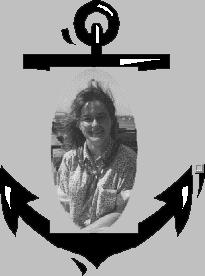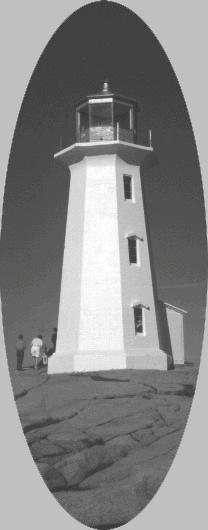 Sonia, the youngest of the group, didn't mind asking taxi drivers why the Macdonald Bridge still stands. |
|

Sonia Ruel Q-Tips' Poet Award Andrew Lloyd Weber's "Pie Jesu," a requiem for the Halifax Explosion of 1917. Home
Their Instructors' Tales About Sonia Residence Teaching Work Hobbies Best Memory of Nova Scotia Q-Tip Distinction
|
The Halifax Explosion 
The explosion occurred as two ships, the Belgian ship Imo and the French ship Mont Blanc which was loaded with explosives, collided in the harbour. The impact was due to both misunderstanding of signals and speed. Twenty minutes passed between the collision and the explosion. So after the impact, firemen as well as spectators, including many children, had time to gather on the waterfront and at windows to watch the boats which were now on fire as they drifted by a Halifax pier. As all 3,000 tons of the Mont Blanc shattered into pieces, Cape Bretoners some 270 miles away felt the shock wave. Over 2,000 people were killed, 9,000 others were wounded, 1,000 survivors sustained eye damage from flying glass, and 325 acres of land were destroyed. Hundreds of unidentified bodies were buried. Several countries around the world sent money and goods to help Haligonians get over this huge disaster and people began re-building the houses (more than 300) that were destroyed into pieces.
The Macdonald Bridge
"On the first attempt to build a bridge, no Indians were hired to participate in its construction. Furious, the chief of the Indian tribe put a curse on the bridge so that it would fall down. The bridge fell, indeed, and the next one they built fell too. The present bridge was built in 1955 and is still standing because, before he died, the Indian chief removed the curse he had put on it."
But who exactly was Peggy? I asked this question to a few citizens of the village and they came up with the following explanations.
A Sense of Cape Breton
I really enjoyed riding along the sometimes winding but always running-by-the-sea roads from one colorful fishing village to another. I treated myself to freshly caught seafood. I also filled my eyes with the sun-produced diamonds on the ocean and the abundance of white, pink, and purple lupins hugging the road. The Cabot Trail led me to unparalleled landscapes, each of them being more picturesque than the previous one. Although I am really thankful to this person, riding along this steep and sinuous road made me wonder who first had the idea of building a road that would skirt the edge of the mountains and cliffs. "Are you crazy?" is probably the three-word sentence he heard most often. Taking me to breathtaking viewpoints as I hiked along, the Skyline Trail was another delightful experience. I can still feel the ever-present breeze on my skin, hear the birds in the middle of a concert, and smell the warm and sweet scent of the forest. Almost being part of the clouds and yet being able to feel the power of the ocean which spread out in every direction before my eyes as far as I could see sent chills down my spine. I was left stunned, awe-struck. Music was also part of my enchantment, for in every single restaurant, craft shop, or art gallery we went into, regional voices and instruments could be heard. Sometimes nostalgic or sentimental, but most of the time very lively, the sounds of the province really helped me get a sense of Nova Scotia and the life of its people. The Capers are proud of their culture and they're pleased to answer any question about it. Though I had already been on Cape Breton Island once, exploring it a second time remained a unique experience which only left me with the desire to return some day. |
© 1997, 1998 TextStyle Publishing & Editing Services and the Centre for Continuing Education, Mount Saint Vincent University This webpage was last updated on December 15, 1998. |

 ome of the nicest memories that filled my head during my stay in Nova Scotia and that I will very probably cherish for years are those of a weekend spent in Cape Breton. Indeed, touring the island was a blissful experience for all my five senses.
ome of the nicest memories that filled my head during my stay in Nova Scotia and that I will very probably cherish for years are those of a weekend spent in Cape Breton. Indeed, touring the island was a blissful experience for all my five senses.